Trees
1/31
There's no tags or description
Looks like no tags are added yet.
Name | Mastery | Learn | Test | Matching | Spaced |
|---|
No study sessions yet.
32 Terms
Identifying Red Alder
Light, spotted bark
Catkins: males are long and hang low; females are cone-like and release seeds
Leaves doubly serrate
Red Alder scientific name
Alnus rubra
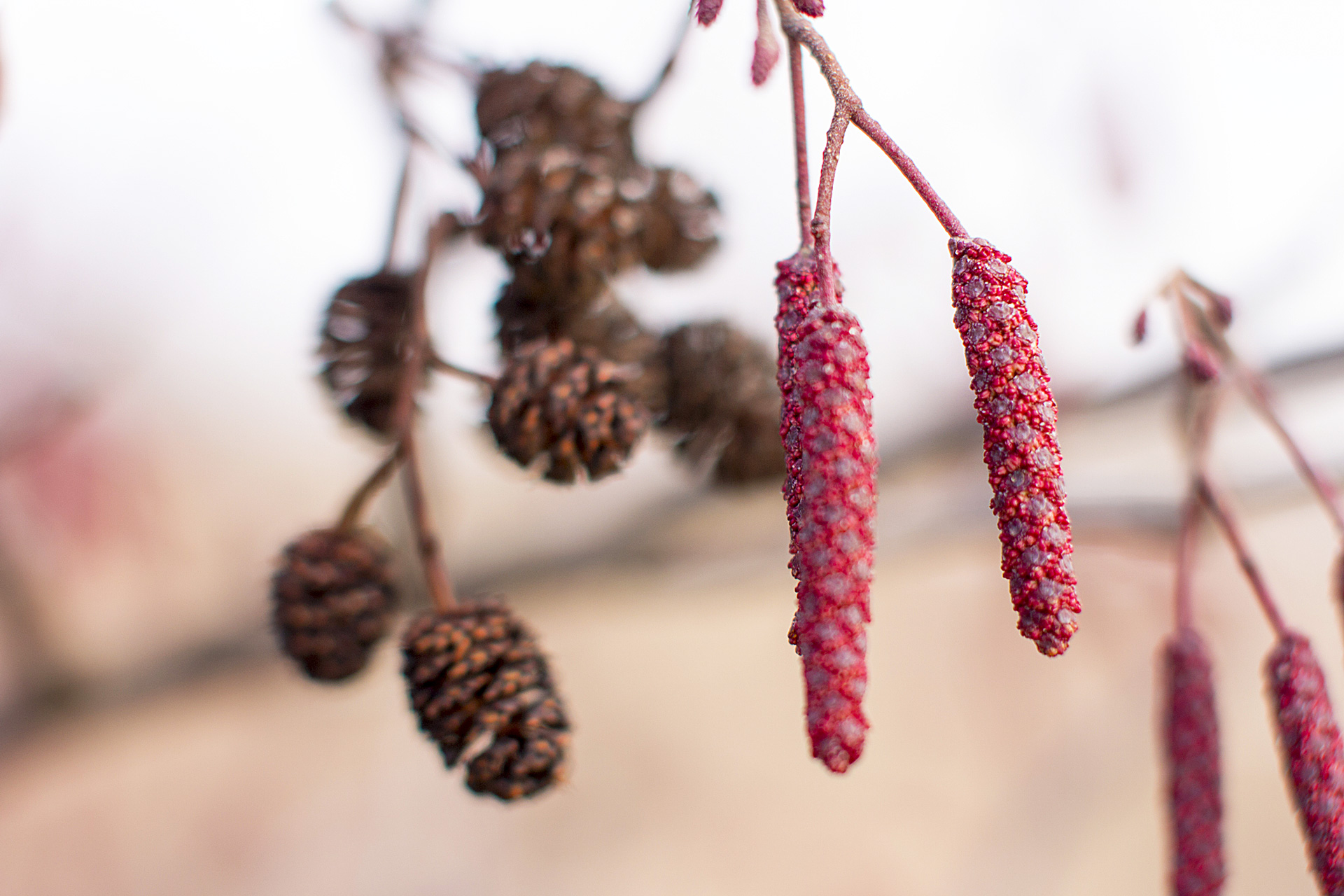
What are these and which tree do they belong to?
Catkins; red alder
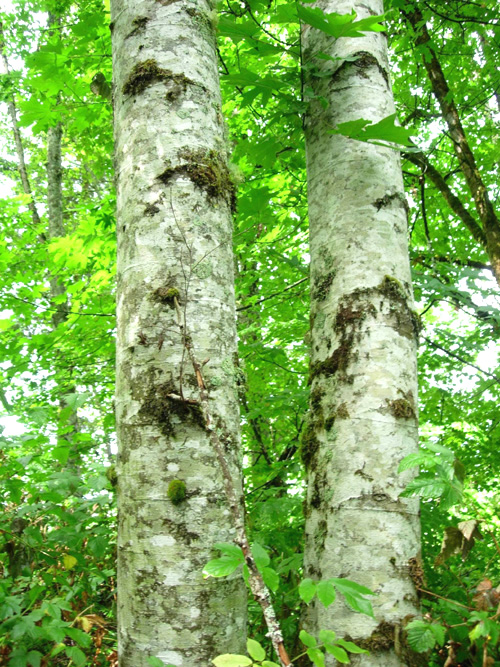
What tree is this?
Red Alder (Alnus rubra)
Identify Douglas Fir
thick, deeply furrowed bark
needles are sharp and spiral around branch
cones have ‘mouse tails’ sticking out
rot outside in
Douglas fir scientific name
Pseudotsuga meziesii
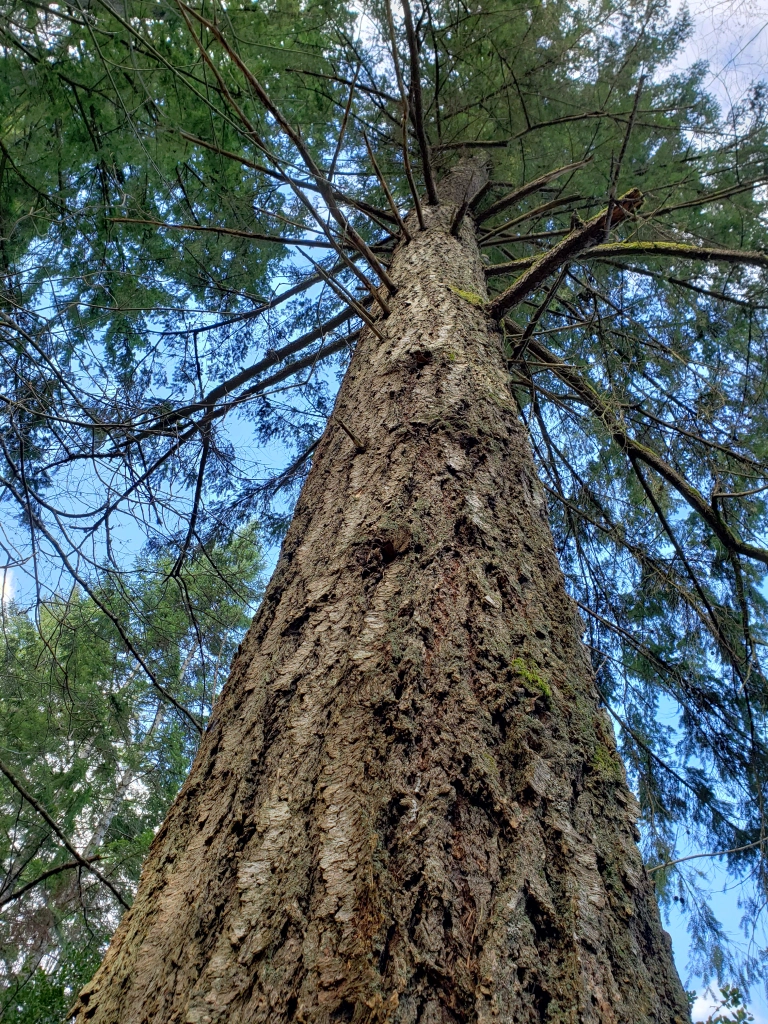
What tree is this?
Douglas fir (Pseudotsuga menziesii)
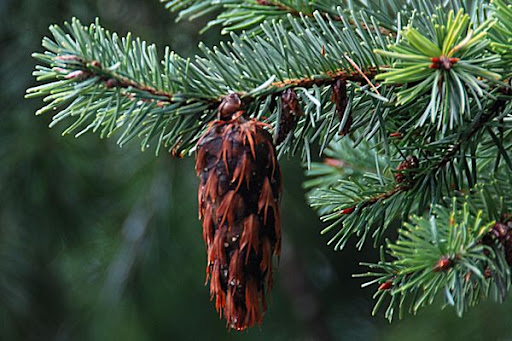
What tree do these belong to?
Douglas Fir (Pseudotsuga menziesii)
Why are Douglas Fir found in recently disturbed sites?
Early successional species - shade intolerant, better in dry conditions
Why are Red Alder found in recently disturbed sites?
Symbiosis with nitrogen-fixing bacteria allows them to thrive in nutrient-poor soil
Identify Western Red Cedar
thin, striped bark
branches J-shaped
flat, scaled leaves
trunks fluted
rot from inside out
Western Red Cedar scientific name
Thuja plicata
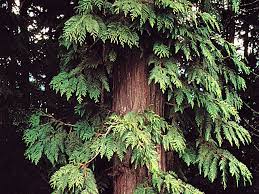
What tree is this?
Western red cedar (Thuja plicata)
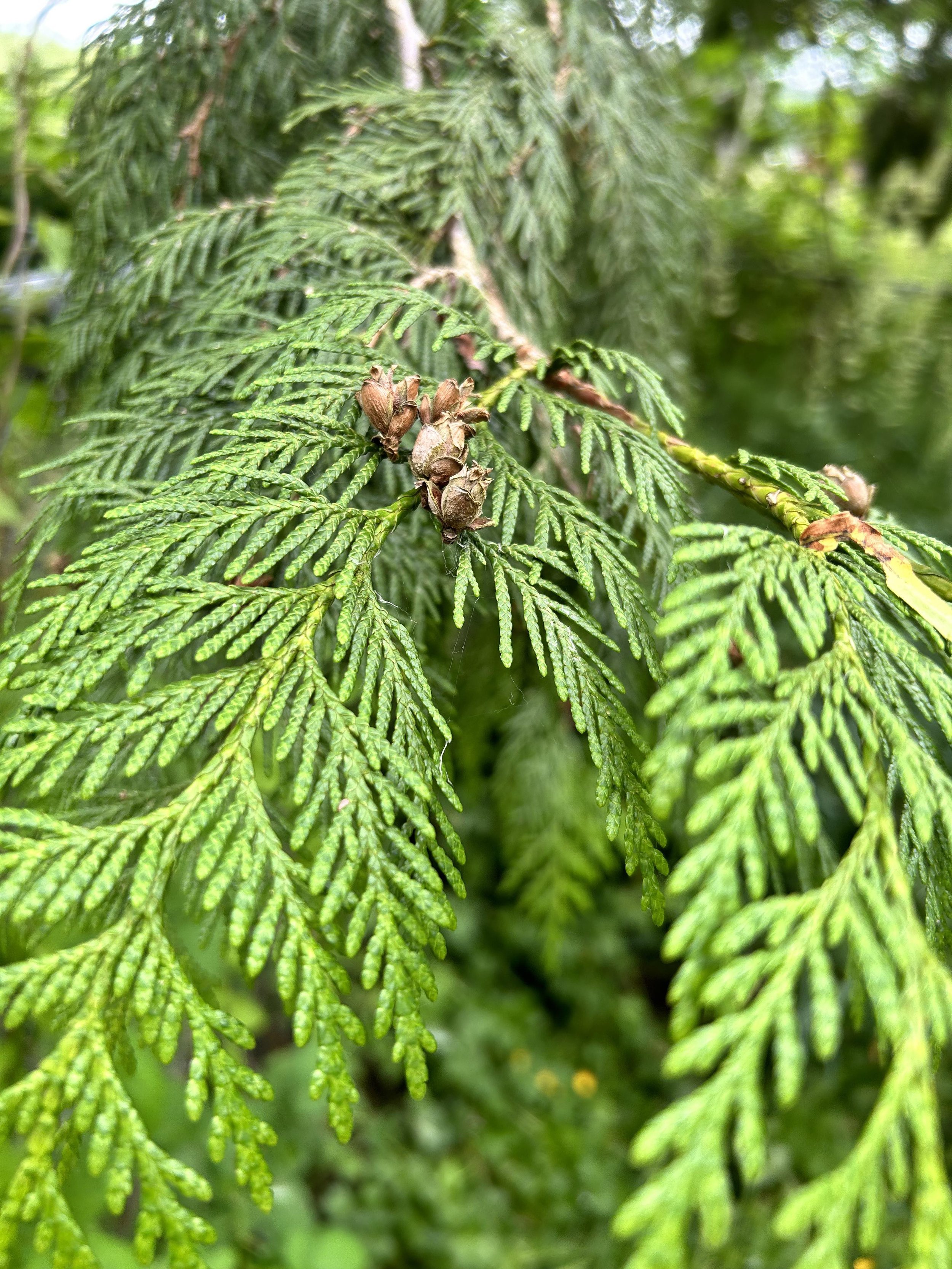
What tree is this?
Western red cedar (Thuja plicata)
Identify Western Hemlock
bark grey-ish brown
bark thin with oblong ‘scales’
branches shelved
blunt, flat needles with silver underside
very small cones
Western hemlock scientific name
Tsuga plicata
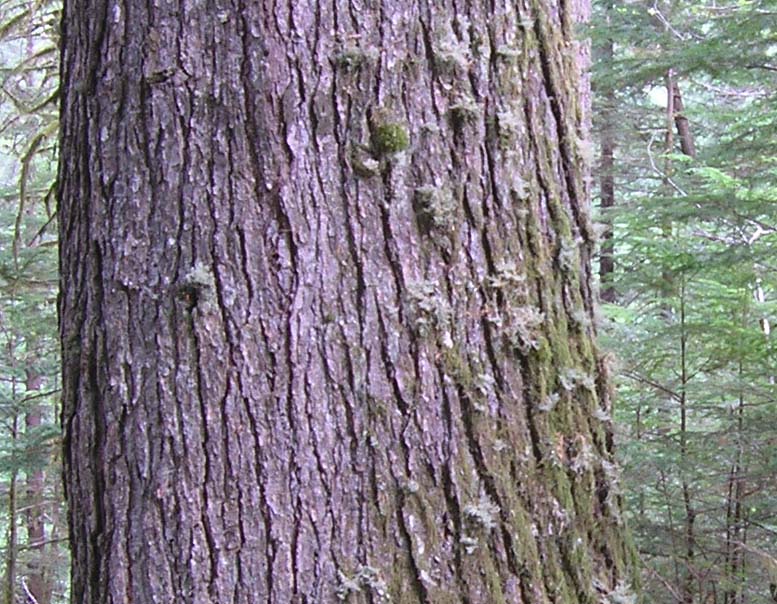
What tree is this?
Western Hemlock (Tsuga heterophylla)
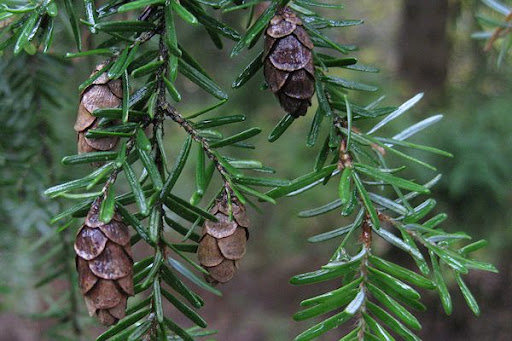
What tree is this?
Western Hemlock (Tsuga heterophylla)
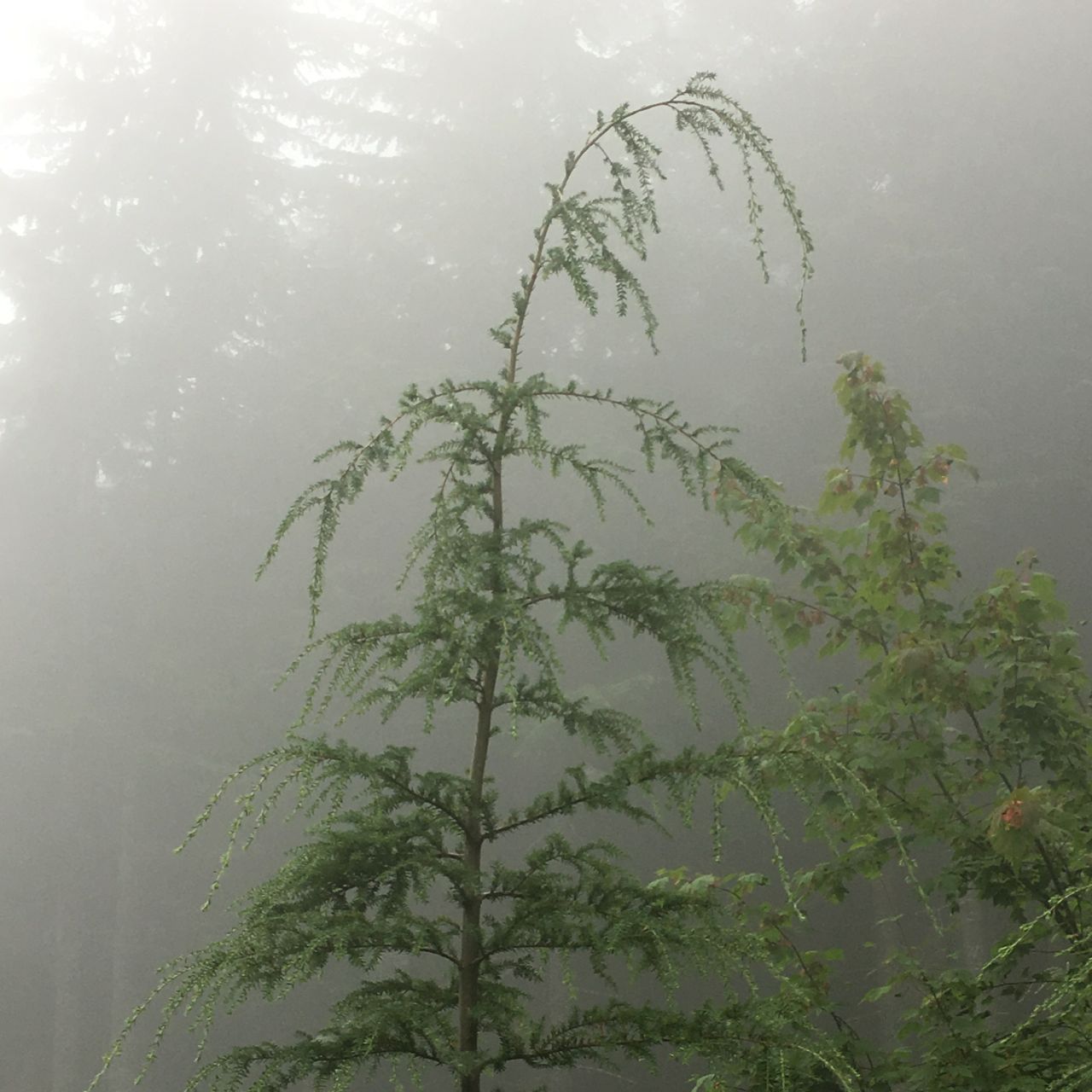
What tree is this?
Western Hemlock (Tsuga heterophylla)
Identify Bigleaf Maple
leaves palmate with 5 main lobes
opposite branching
often covered in moss and ferns
double-winged samara
Bigleaf maple scientific name
Acer macrophyllum

What tree is this?
Bigleaf Maple
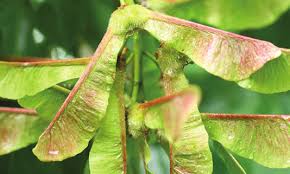
What tree do these belong to?
Bigleaf Maple
Identify Shore/lodgepole Pine
twisted needles sprout in pairs
scaly dark grey bark
male cones small and orange clusters
female cones have wood brackets and spikes
decurrent
Shore/lodgepole pine scientific name
Pinus contorta
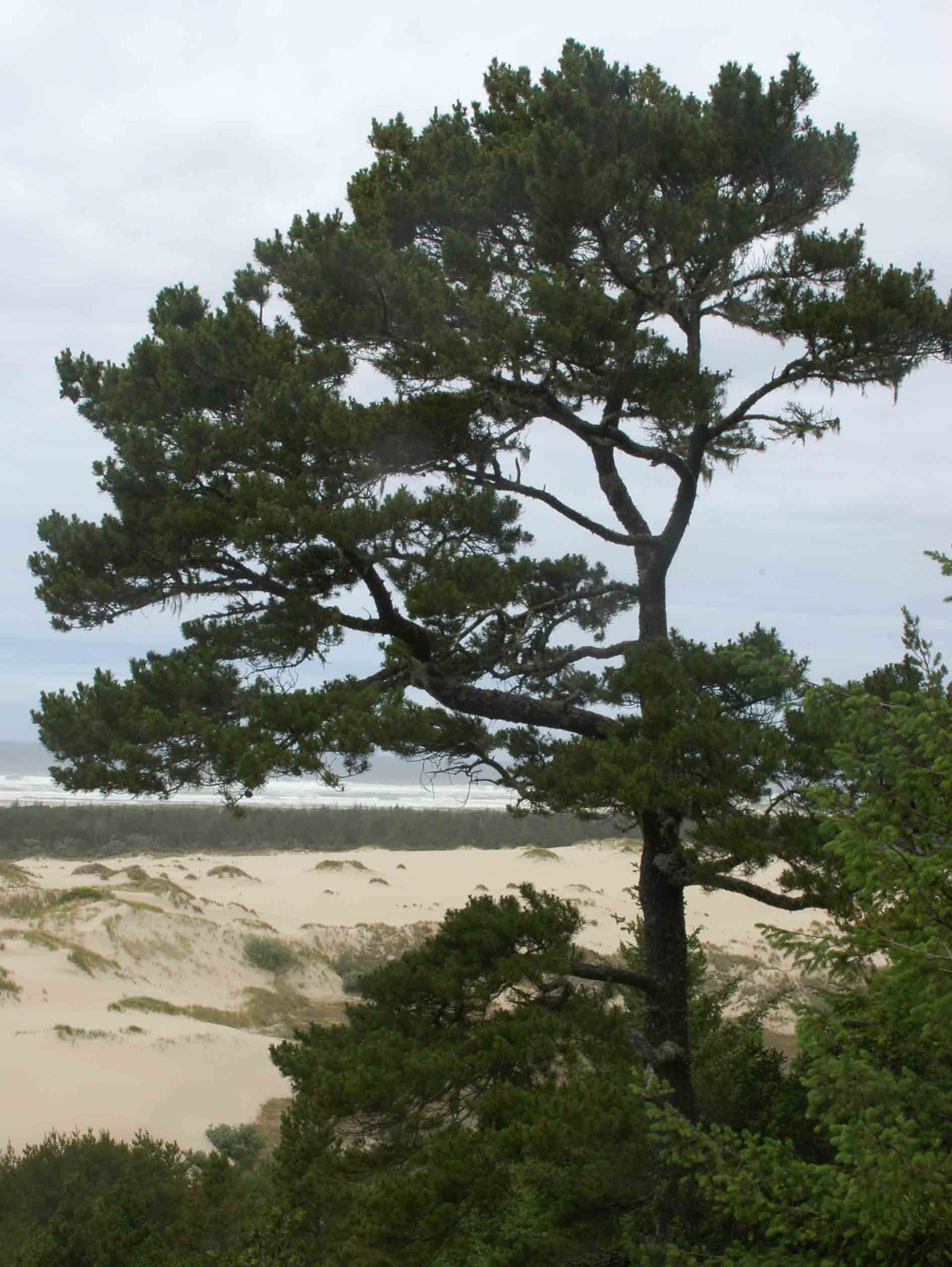
What tree is this?
Shore Pine (Pinus contorta)
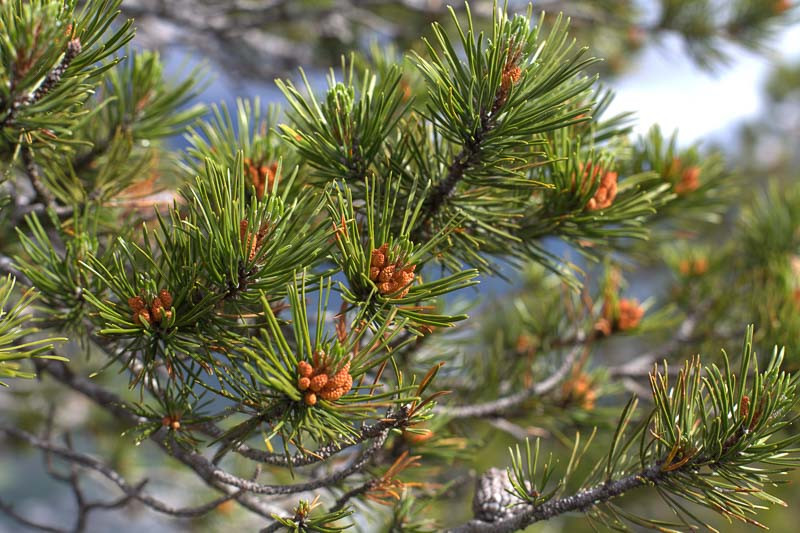
What family is this in?
Pine (Pinus)
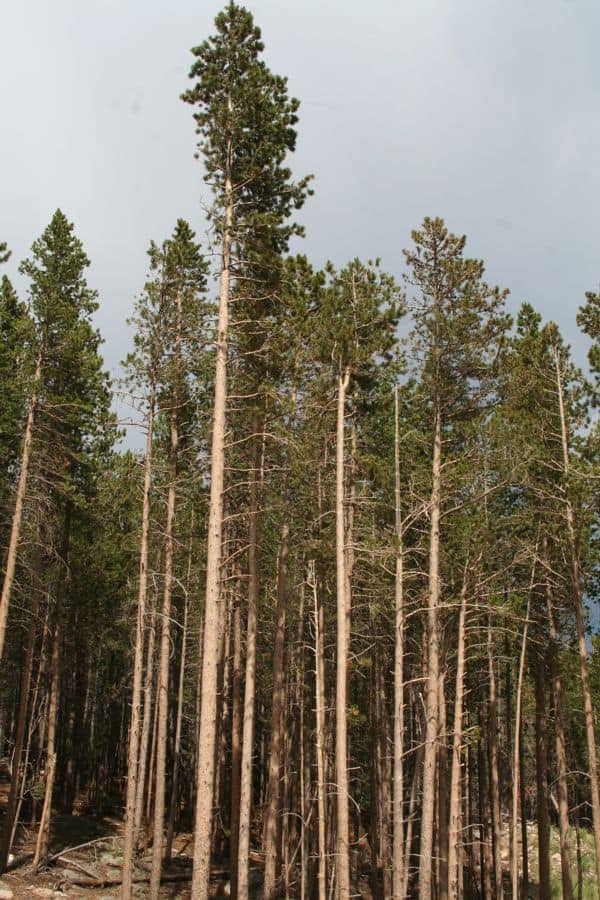
What is the dominant tree here?
Lodgepole pine (Pinus contorta)
Identify Ponderosa pine
needles grow in threes
longest pine needles
thick, furrowed bark brown on outside, black inside
large ovular cones with thick scales and sharp spike
Ponderosa pine scientific name
Pinus ponderosa
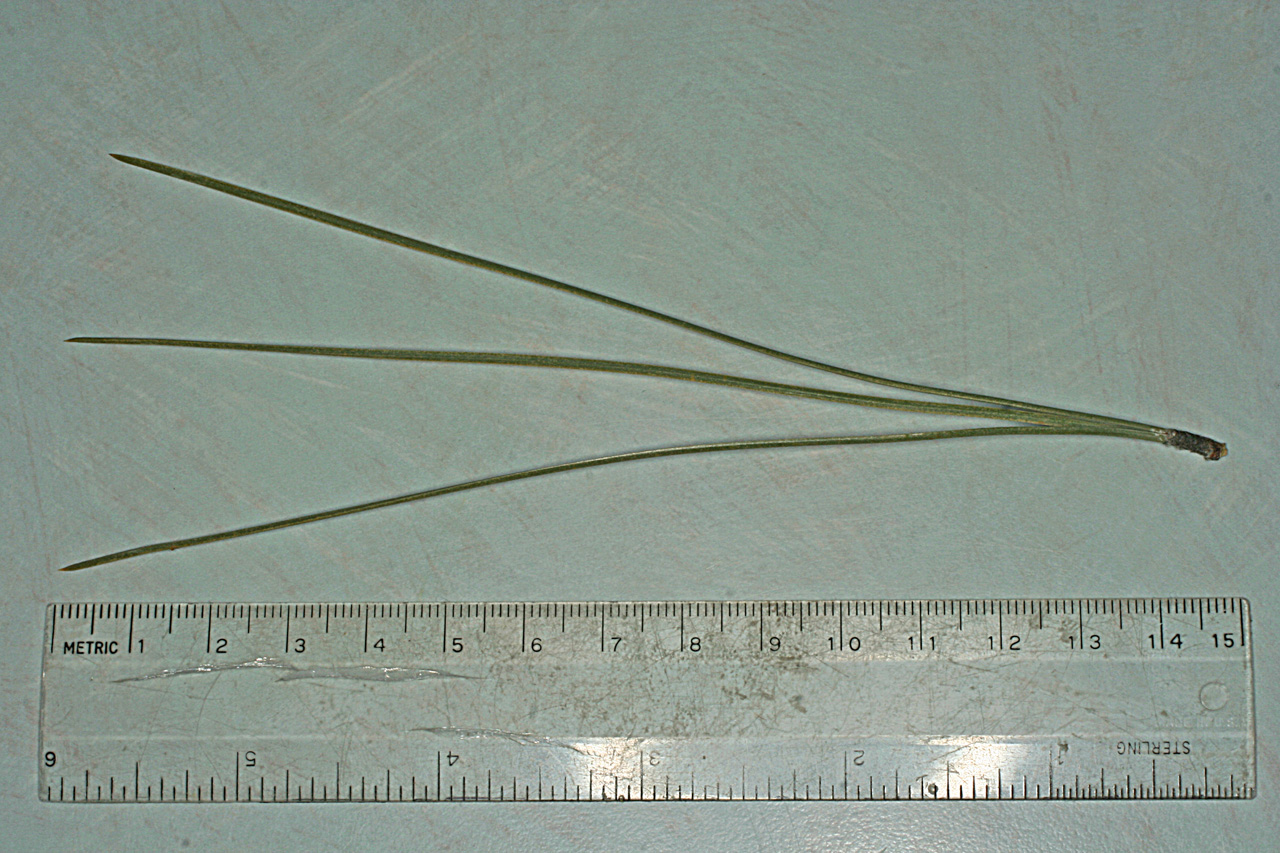
What pine species are these from?
Ponderosa pine (Pinus ponderosa)
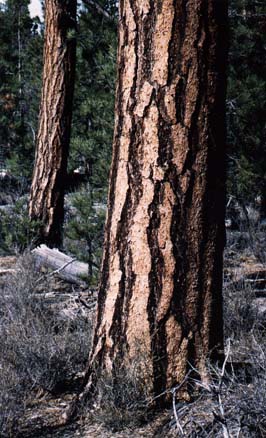
What tree is this?
Ponderosa pine (Pinus ponderosa)